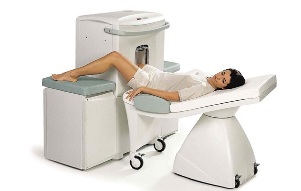
Arthritis and arthrosis are completely different diseases that are not much alike. Knowing the differences between these diseases, you can accurately diagnose and prescribe an effective treatment.
Definition of arthritis and arthrosis
Arthritis is an inflammation of the joint. Several articular joints or only one may be involved in the inflammatory process. It all depends on the etiology of origin.
Causes of arthritis:
- hypothermia;
- autoimmune reactions;
- infections;
- metabolic disorders;
- injury.
Arthritis can be primary, that is, be an independent disease or be a consequence of another disease. It proceeds in an acute or chronic form. In the latter case, complications are likely.
Unlike arthritis, arthrosis is a chronic disease characterized by degenerative-dystrophic changes in the articular joint. It is not accompanied by an inflammatory process, although it can occur against its background.
Osteoarthritis is more often diagnosed in elderly patients and people who go in for sports, since it is injuries that are the main cause of pathological changes.
Differences
Osteoarthritis and arthritis occur mainly in people over 35 years old. According to statistics, every third person has joint problems. Since these diseases are common, you need to know what the difference is between them.
Reasons
According to the etiology of origin, there are differences and similarities. The following general factors can act as provocateurs of arthritis and arthrosis:
- injury;
- excessive prolonged stress on the articular joints;
- hypothermia;
- congenital anomalies of bone or connective tissue.
Of course, heredity plays an important role.
But there are provoking factors that are inherent in only one disease. The difference between arthrosis and arthritis is that the latter is caused by infections that lead to inflammation. Also, metabolic disorders and dysfunction of the immune system can be to blame for the inflammatory process.
The occurrence of arthritis is associated with the general condition of the body. The disease can cause inflammation of other organs.
Arthrosis is a non-infectious disease. Its main reason for its development is trauma or age-related changes in cartilage tissue. Often the fault is not completely cured arthritis or arthritis that was not properly treated.
Osteoarthritis differs in that it can also be caused by other provocateurs:
- hormonal disorders;
- hemophilia;
- intoxication of the body.
Osteoarthritis is an occupational disease of athletes.
Symptoms
As for the symptoms, at first glance it may seem that they are identical. The main symptoms are pain and decreased joint mobility. But having studied the features, you can distinguish arthrosis from arthritis on your own and choose the right specialist to contact for therapy.
Artrolog deals with the treatment of articular joints. Sometimes the help of an orthopedic surgeon, traumatologist and rheumatologist is required.
The table shows the difference between the symptoms of arthritis and arthrosis.
| Symptoms | Arthritis | Arthrosis |
| Pain sensations | Pain does not depend on physical activity. She is worried both during movement and at rest. Morning pains are characteristic, between 3: 00-6: 00 am | At the initial stage, soreness appears only under heavy loads, at rest it is absent. As the cartilage breaks down, the pain sensation may occur constantly. There are night dull pains due to stagnation of blood |
| Restricted Mobility | Morning stiffness. A person cannot move normally until the joint develops | A characteristic decrease in the range of motion, and in the later stages - complete immobilization of the joint |
| Crunch | Unlike arthrosis, there is no crunching | Clicks are heard in the joint when performing movements in it. The worse the condition of the cartilage tissue, the stronger the crunch, since it occurs due to the abrasion of the cartilage tissue and the friction of the bones against each other |
| Visible joint changes | There are some external differences. There is redness and swelling, local hyperthermia. Fluid is collected in the articular cavity. Palpation is painful. In complicated cases, nodules appear | The main difference is the joint is deformed |
| Increased body temperature | In the acute stage, temperatures can reach 39 ° C | Body temperature within normal limits |
| Systemic manifestations | Weakness, chills, sweating, weight loss, headache, body aches | None |
The difference is that in terms of clinical manifestations, arthritis is similar to infectious diseases, while arthrosis is similar to joint injury.
In these diseases, both large and small articular joints can be affected.
The difference is that the following joints are more often involved in the inflammatory process:
- knee;
- wrist;
- fingers and toes.
Arthritis is characterized by massive damage to the joints. For example, today the ulnar joint becomes inflamed, and tomorrow the shoulder joint becomes inflamed. Several asymmetric joints can become inflamed, which is completely unusual for arthrosis. The difference is that with it, large articular joints are involved in the pathological process, since they carry the greatest load throughout life. These are the hip, knee and ankle joints. Small ones - fingers and toes may suffer. Often, destructive processes affect the intervertebral cartilage.
The most vulnerable place is the knee joint, since it regularly gives in to stress. It wears out faster than other joints.
Diagnostics

Differences between arthritis and arthrosis are also in diagnosis. The first disease can be suspected after laboratory examination. The diagnosis of arthrosis is made only after instrumental examination.
You can distinguish arthrosis from arthritis by clinical and biochemical blood tests. In the first case, there is inflammation, and, accordingly, leukocytes and ESR are increased. With arthrosis, the difference is that the blood counts are normal. Degenerative changes can only be seen through radiography. The images show areas of destruction of cartilage tissue.
In controversial cases, do rheumatology test.
How to diagnose arthritis or arthrosis? The most reliable methods for differentiating these diseases is CT and MRI, but these examinations are expensive.
Principles of Treatment
Both diseases are difficult to treat. The worse the stage, the more sad the prognosis. The course of treatment can be up to 6 months. With dystrophic changes, it takes years to recover.
Knowing the differences between arthritis and arthrosis, you can start the correct therapy in a timely manner. The approach to treatment is different, since the etiology of the origin of diseases is different. But the complexity of the approach to therapy remains common. After it has been possible to determine whether the patient has arthritis or arthrosis, it is necessary to find out the cause.
With an infectious origin of the disease, antibiotics are indispensable. The goal of therapy for arthritis is to eliminate the infectious agent, reduce inflammation and prevent it from spreading to other organs. Suitable drugs are macrolides, fluoroquinolones, tetracyclines.
In addition, local or systemic NSAIDs must be prescribed.
If the cause of arthritis is an autoimmune reaction, hormonal drugs are prescribed. With metabolic disorders, for example, gout, you will need funds that affect the formation of uric acid and other substances. Anti-gout medications may be used.
Unlike arthritis, the main task of arthrosis therapy is to restore cartilage tissue and restore joint mobility. For this purpose, chondroprotectors, hyaluronate preparations, NSAIDs are used internally and externally (if there is an inflammatory process). The patient must undergo a course of physiotherapy exercises.
In case of severe destruction of cartilaginous tissue in arthrosis, an operation to replace the joint is indicated.
Which disease is worse?
The answer to this question is simple, knowing the mechanism of development of the disease. The difference between arthritis and arthrosis of the knee joint is that the inflammatory process can be cured without consequences. It is possible to fully restore the mobility of the articular joint and lead a full life.
The difference between arthrosis and arthritis of the knee joint is that the former is characterized by irreversible changes. If treatment is not started on time, then disability is likely. This is the answer to the question which is worse - arthritis or arthrosis. Of course, the latter type of disease is more dangerous for the joints.
But if we consider the harm to the body as a whole, then arthritis is worse. This disease affects other organs and systems, including the liver, lungs, kidneys, blood vessels, and heart. The consequences can be dire.
Joint diseases develop gradually, so their initial symptoms may not be noticed. Unfortunately, this leads to the fact that the patient seeks treatment late, conservative therapy is either unsuccessful or prolonged. To prevent arthritis or arthrosis from being caught by surprise, it is worth adhering to preventive measures, namely avoiding injuries, exertion and eating right.
















